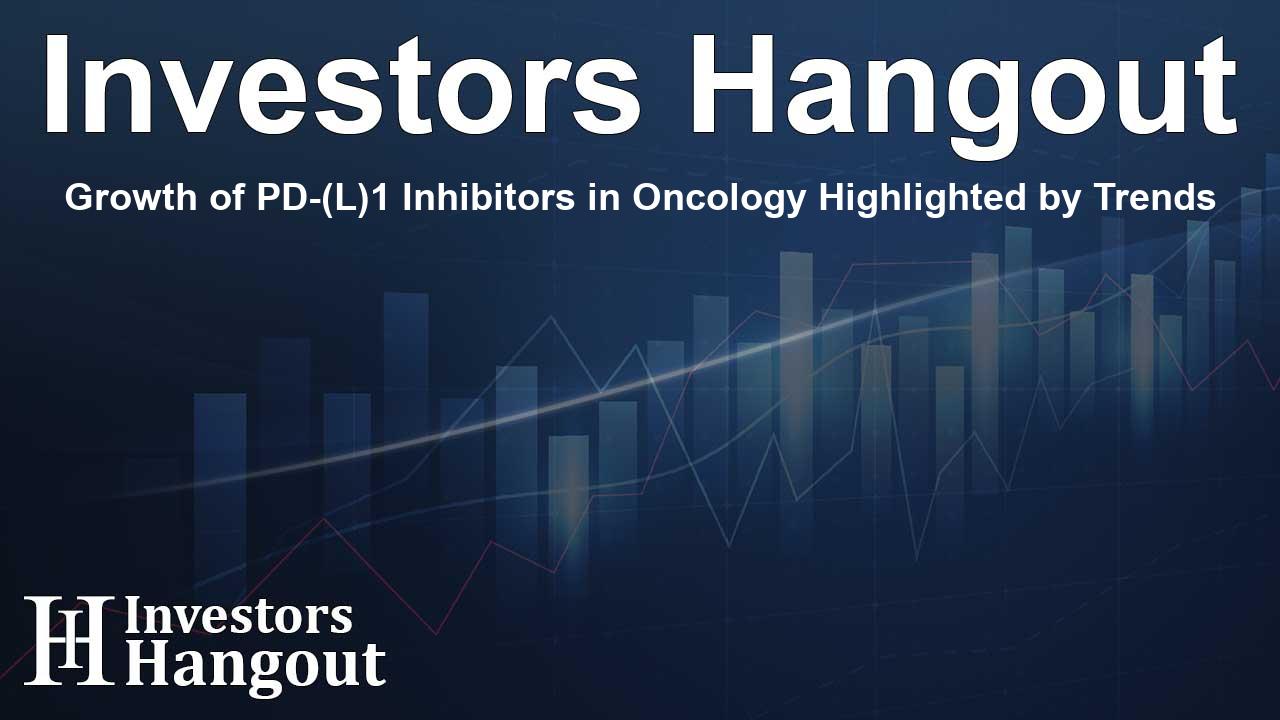Growth of PD-(L)1 Inhibitors in Oncology Highlighted by Trends

Emerging Trends in the PD-(L)1 Inhibitors Market
As innovations in immunotherapy continue to shape cancer treatment, the PD-(L)1 inhibitors market is witnessing significant growth. These therapies are redefining patient outcomes across various cancers, prompting both researchers and pharmaceutical companies to invest heavily in this evolving space.
Understanding PD-(L)1 Inhibitors
PD-(L)1 inhibitors target critical pathways that allow tumors to hide from the immune system, making them groundbreaking options in oncology. These therapies have successfully brought hope to patients by restoring the immune response against cancer cells.
The adaptability of PD-(L)1 inhibitors allows them to be used alone or in combination with other treatments, which has revolutionized care for conditions such as Non-Small Cell Lung Cancer (NSCLC) and melanoma. Their ability to produce durable responses while managing toxicity effectively is a vital factor propelling their adoption.
Market Insights and Key Statistics
A recent analysis highlights that the United States is expected to dominate the PD-(L)1 inhibitors market significantly, with estimations exceeding USD 28 billion in annual sales. Furthermore, this market scope encompasses several therapeutic indications, including renal cell carcinoma, triple-negative breast cancer, and more.
Recent Developments in PD-(L)1 Therapy
Innovative companies like Pfizer and Shanghai Henlius Biotech are advancing in the PD-(L)1 space, with pipelines featuring promising candidates such as sasanlimab and HLX43. These drugs are anticipated to enter the market in the near future, potentially transforming treatment protocols and establishing new standards of care.
Significant Clinical Trials and Partnerships
Clinical trials remain a cornerstone of progress within the PD-(L)1 inhibitors market. For example, comprehensive studies are underway to evaluate the efficacy of newer agents like Zimberelimab and Balstilimab. These investigations are crucial to understanding how best to integrate these treatments into standard practices.
Additionally, collaborations, such as those between Agenus and Zydus Lifesciences, aim to enhance accessibility and manufacturing capabilities, thereby accelerating the delivery of these innovative treatments to patients.
Navigating Market Challenges
Despite the promising outlook for PD-(L)1 therapies, challenges persist. Rising costs associated with these therapies draw scrutiny from payers and healthcare providers alike. Furthermore, the landscape is crowded with competing agents, including other checkpoint inhibitors, which complicates market dynamics.
It's important to note that while many patients benefit from PD-(L)1 treatments, not everyone responds. Addressing the biomarker-driven selection of patients for therapy will be critical in overcoming resistance. Researchers are actively investigating complementary therapies and novel combinations to further enhance patient outcomes.
Future Projections for PD-(L)1 Treatments
Looking toward the future, the PD-(L)1 inhibitors market is set for ongoing expansion. Demand for these therapies is likely to rise, particularly as they gain approval for earlier-stage treatments and become integrated into combination regimens.
Strategic collaborations and regional partnerships will be pivotal as companies navigate the competitive landscape and seek to establish a foothold in this lucrative market. Overall, the trajectory of PD-(L)1 inhibitors looks bright, offering substantial opportunities for innovation and patient care improvements.
Frequently Asked Questions
What are PD-(L)1 inhibitors?
PD-(L)1 inhibitors are a type of immunotherapy that targets pathways allowing tumors to evade the immune system, enhancing the body's ability to attack cancer cells.
Why is the PD-(L)1 inhibitors market growing?
The market is growing due to increased adoption of immunotherapy, promising clinical data, and the development of new agents that offer improved efficacy and safety.
What cancers are treated with PD-(L)1 inhibitors?
PD-(L)1 inhibitors are used in the treatment of various cancers, including melanoma, Non-Small Cell Lung Cancer, renal cell carcinoma, and more.
What is the future outlook for PD-(L)1 inhibitors?
The future looks promising with expectations for continued market growth driven by ongoing research, new drug approvals, and wider therapeutic applications.
Who are the key players in the PD-(L)1 market?
Key players include companies such as Pfizer, Merck, Roche, Bristol Myers Squibb, and emerging firms like Shanghai Henlius Biotech and Agenus.
About The Author
Contact Olivia Taylor privately here. Or send an email with ATTN: Olivia Taylor as the subject to contact@investorshangout.com.
About Investors Hangout
Investors Hangout is a leading online stock forum for financial discussion and learning, offering a wide range of free tools and resources. It draws in traders of all levels, who exchange market knowledge, investigate trading tactics, and keep an eye on industry developments in real time. Featuring financial articles, stock message boards, quotes, charts, company profiles, and live news updates. Through cooperative learning and a wealth of informational resources, it helps users from novices creating their first portfolios to experts honing their techniques. Join Investors Hangout today: https://investorshangout.com/
The content of this article is based on factual, publicly available information and does not represent legal, financial, or investment advice. Investors Hangout does not offer financial advice, and the author is not a licensed financial advisor. Consult a qualified advisor before making any financial or investment decisions based on this article. This article should not be considered advice to purchase, sell, or hold any securities or other investments. If any of the material provided here is inaccurate, please contact us for corrections.
